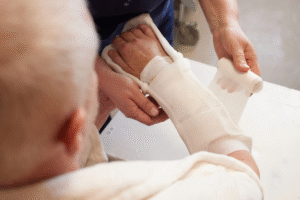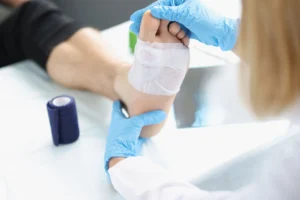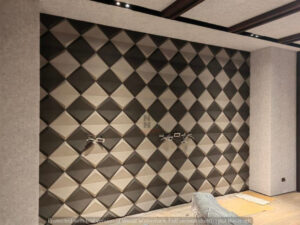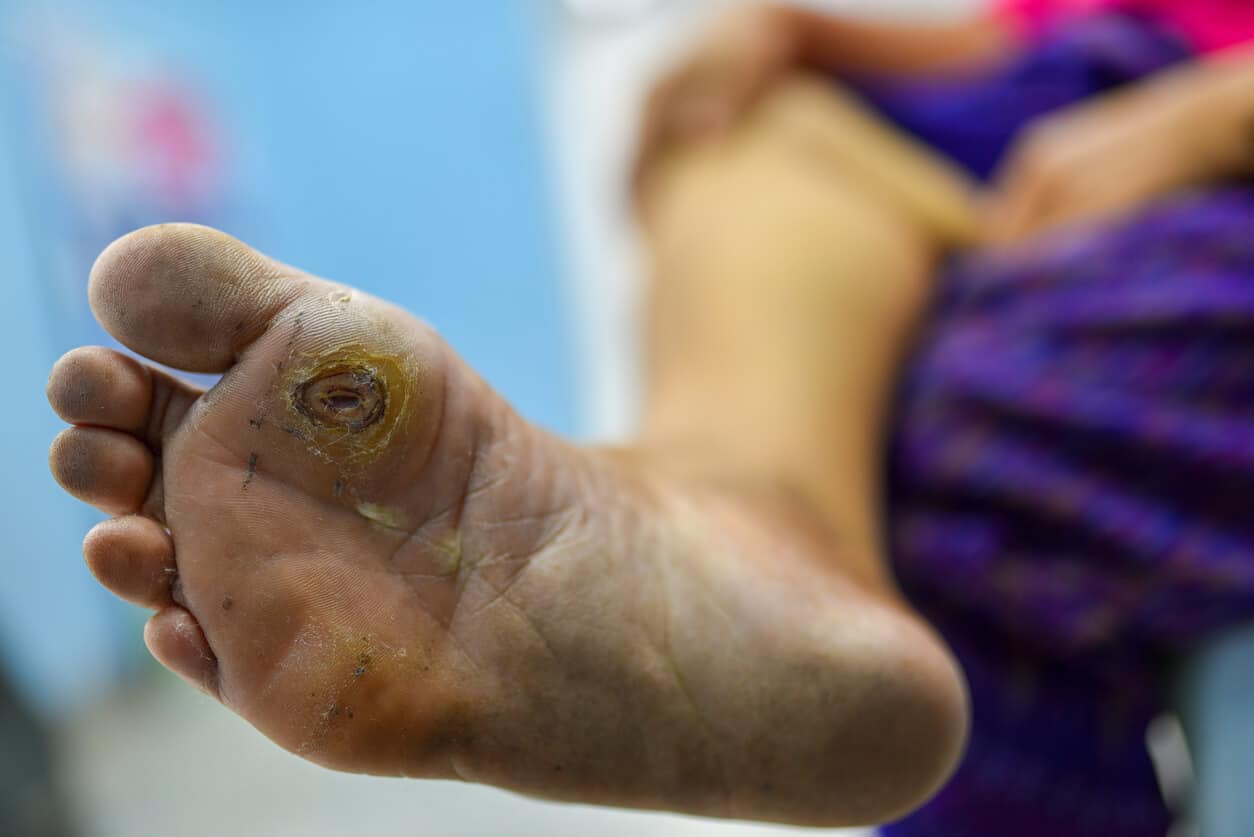Diabetic gangrene is a serious and potentially life-threatening complication that affects individuals with diabetes, particularly those with poorly controlled blood sugar or compromised circulation. This condition occurs when tissue dies due to inadequate blood flow or severe infection, often affecting the feet, toes, or lower extremities. Diabetes can damage nerves and blood vessels, making it difficult for patients to sense injuries or heal from infections, which significantly increases the risk of gangrene. There are different types of gangrene seen in diabetic patients, including dry, wet, and gas gangrene, each requiring a specific medical approach. Dry gangrene typically develops slowly and results from reduced blood flow, whereas wet gangrene progresses rapidly due to bacterial infection. Gas gangrene, though rare, involves toxin-producing bacteria and demands immediate medical attention. Recognizing the signs early is crucial, as untreated gangrene can lead to severe complications, including systemic infection and limb loss.
Symptoms and Diagnosis of Diabetic Gangrene
Patients with diabetic gangrene may notice changes in skin color, ranging from pale or blue to dark brown or black, often accompanied by a foul odor or discharge. Pain, swelling, numbness, and coldness in the affected area are common indicators, though neuropathy may mask discomfort, delaying detection. Physicians rely on a combination of physical examinations, blood tests, and imaging studies such as X-rays, MRI, or CT scans to assess the extent of tissue damage and bone involvement. Differentiating gangrene from other diabetic complications, like ulcers or cellulitis, is vital for appropriate treatment. Early diagnosis can improve outcomes significantly, making routine foot checks essential for individuals with diabetes. Multidisciplinary assessments involving endocrinologists, vascular surgeons, and orthopedic specialists ensure a comprehensive treatment plan. Orthopedic surgeons play a critical role in evaluating bone integrity and determining the best surgical interventions to prevent further tissue loss.
Orthopedic Approaches in Treating Diabetic Gangrene
Orthopedic treatment for diabetic gangrene often focuses on preserving as much of the limb as possible while removing infected or necrotic tissue. Surgical debridement is a common procedure, involving the careful removal of dead tissue to prevent the spread of infection. In more severe cases, partial or complete amputation may be necessary, though modern orthopedic techniques aim to minimize limb loss whenever feasible. Bone involvement is a critical factor in treatment planning, as osteomyelitis (bone infection) can complicate recovery and increase the risk of recurrence. Orthopedic surgeons may also address deformities, joint instability, or structural changes caused by chronic diabetic complications. Customized orthopedic devices, such as braces or specialized footwear, can support healing and protect vulnerable areas during recovery. Coordination with wound care specialists ensures that surgical sites remain clean and properly managed to promote faster and safer healing.
Adjunctive Therapies and Supportive Care
Beyond surgical intervention, supportive therapies are essential to optimize outcomes for diabetic gangrene patients. Effective wound care, including regular cleaning, dressing changes, and monitoring for infection, plays a vital role in recovery. Antibiotic therapy is commonly prescribed to manage or prevent infections, tailored to the patient’s bacterial culture results. Hyperbaric oxygen therapy is sometimes used to improve oxygen delivery to affected tissues, supporting healing and reducing amputation risk. Pain management strategies, including medications and nerve blocks, help patients maintain comfort and mobility during recovery. Rehabilitation planning, often guided by orthopedic specialists, ensures that patients regain functional use of their limbs and adapt to any physical limitations. Nutritional support and blood sugar management are also critical, as controlled glucose levels enhance the body’s ability to repair tissue. A holistic approach combining surgical, medical, and supportive care improves both short-term recovery and long-term limb preservation.
Preventive Orthopedic Measures for High-Risk Diabetic Patients
Prevention is a cornerstone of orthopedic management for patients at risk of diabetic gangrene. Regular foot examinations by both patients and healthcare providers can identify early signs of tissue damage, infections, or poor circulation. Custom orthotics, insoles, and protective footwear reduce pressure points and friction, minimizing the risk of ulcers that can lead to gangrene. Exercise and lifestyle interventions, such as walking, low-impact activities, and maintaining healthy blood glucose levels, improve circulation and tissue health. Patients are encouraged to inspect their feet daily, paying close attention to cuts, blisters, or color changes, and to seek medical attention promptly when problems arise. Education on proper foot hygiene, moisture management, and nail care empowers patients to actively participate in preventing complications. Orthopedic specialists may recommend periodic imaging or vascular assessments for high-risk individuals to detect circulatory problems early. Incorporating these preventive measures significantly reduces the likelihood of severe gangrene and the need for invasive interventions.
Post-Treatment Recovery and Rehabilitation
Recovery following orthopedic treatment for diabetic gangrene requires careful planning and monitoring. Physical therapy is often essential to restore mobility, strengthen muscles, and improve balance, particularly after amputation or extensive debridement. Orthopedic follow-ups help track bone health, joint stability, and the healing progress of surgical sites. Patients are advised on strategies to prevent recurrence, including continued blood sugar control, foot protection, and adherence to exercise routines. Prosthetics or adaptive devices may be introduced for patients who experience partial or complete limb loss, helping them regain independence and quality of life. Psychological and social support is equally important, as coping with the physical and emotional impact of diabetic gangrene can be challenging. Nutritional counseling and education on long-term diabetic care further support sustained recovery and limb preservation. A collaborative approach among orthopedic surgeons, endocrinologists, rehabilitation specialists, and patients ensures comprehensive care and the best possible outcomes.
FAQ
What is the role of an orthopedic specialist in diabetic gangrene?
Orthopedic specialists evaluate bone involvement, perform surgical procedures such as debridement or amputation, and recommend devices to support healing and mobility. They work alongside other healthcare professionals to preserve limb function.
Can diabetic gangrene be treated without amputation?
In many cases, early detection and aggressive management can prevent amputation. Debridement, infection control, and supportive care may suffice if the tissue damage is limited.
How long does recovery take after orthopedic treatment for gangrene?
Recovery time varies depending on the severity of the condition, surgical interventions, and overall health. It can range from a few weeks for minor procedures to several months for extensive limb salvage or rehabilitation.
Are there devices or shoes that can help prevent diabetic foot complications?
Yes, custom orthotics, pressure-relieving insoles, protective footwear, and braces are commonly recommended to reduce friction, pressure, and the risk of ulcers.
What warning signs should prompt immediate medical attention in diabetic patients?
Persistent discoloration, foul odor, swelling, numbness, pain, or open sores on the feet or lower limbs require urgent evaluation to prevent gangrene progression.











